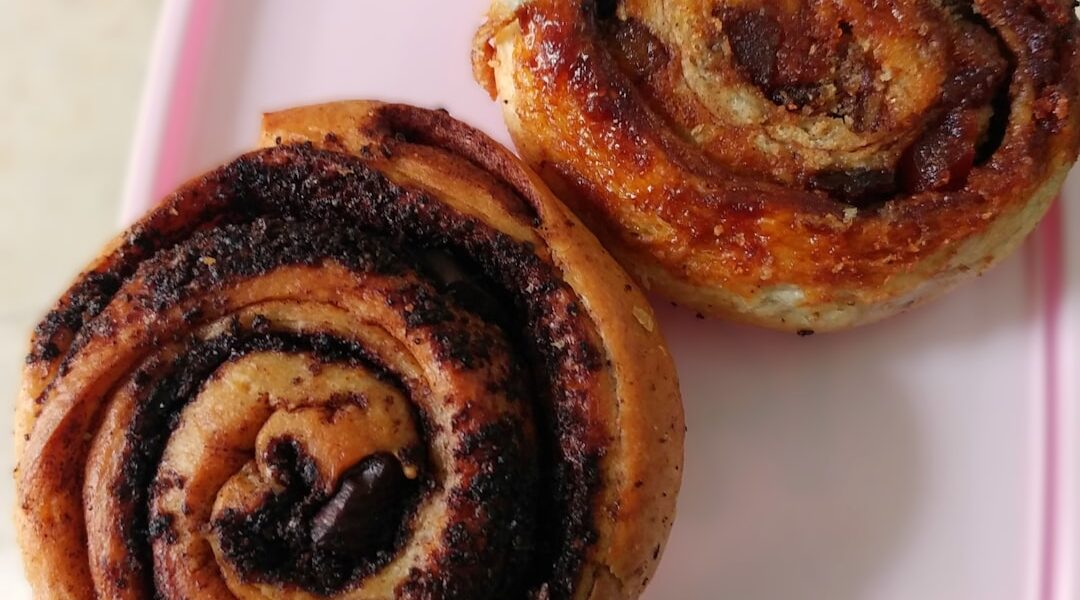Bulgarian cuisine is a diverse and flavorful culinary tradition that has evolved over centuries. Located in Eastern Europe, Bulgaria’s food culture reflects influences from neighboring countries and its own historical developments. The cuisine is characterized by the use of fresh, locally-sourced ingredients, robust flavors, and substantial dishes suited to the country’s cold winters.
Bulgarian culinary offerings range from hearty stews to sweet pastries, appealing to a wide variety of palates. The country’s cuisine is a product of its agricultural abundance and its geographical position between Europe and Asia. Bulgarian dishes frequently incorporate fresh vegetables, herbs, and spices, along with dairy products, meats, and grains.
The flavor profiles are typically bold and satisfying, emphasizing simple combinations that enhance the natural tastes of the ingredients. Popular dishes include bean soup and grilled meat and vegetable platters, which exemplify the hearty and flavorful nature of Bulgarian cuisine.
Key Takeaways
- Bulgarian cuisine is a rich and diverse culinary tradition that reflects the country’s history and geography.
- Traditional ingredients such as yogurt, feta cheese, and peppers play a central role in Bulgarian cooking, adding unique flavors to the dishes.
- Classic Bulgarian dishes like banitsa, kebapche, and shopska salad offer a delicious culinary journey through Eastern Europe.
- Bulgarian baking is known for its sweet treats and pastries, including baklava, tolumbichki, and kozunak.
- Pickling and fermenting are important techniques in Bulgarian cuisine, preserving tradition and adding depth of flavor to dishes.
The Role of Traditional Ingredients in Bulgarian Cooking
Fresh Vegetables and Herbs
Fresh vegetables such as tomatoes, peppers, cucumbers, and eggplants are staples in Bulgarian cuisine and are used in a variety of dishes, from salads to stews. Herbs such as parsley, dill, and mint are also widely used to add flavor and freshness to dishes.
Dairy and Meat
Dairy products such as yogurt and white brined cheese are essential components of many Bulgarian dishes, adding a creamy and tangy element to the cuisine. In addition to vegetables and dairy, meats play a significant role in Bulgarian cooking. Pork, chicken, and lamb are commonly used in traditional Bulgarian dishes, often grilled or stewed with a variety of spices and herbs.
Preservation and Grains
Bulgarians also have a strong tradition of preserving meats through techniques such as smoking and curing, which adds depth and complexity to many dishes. Grains such as rice and bulgur are also important staples in Bulgarian cuisine, often used as a base for hearty stews and pilafs.
Characteristics of Traditional Bulgarian Cooking
Overall, traditional Bulgarian cooking is characterized by its use of fresh, seasonal ingredients that are prepared simply to highlight their natural flavors.
Classic Bulgarian Dishes: A Culinary Journey through Eastern Europe

Bulgarian cuisine offers a wide array of classic dishes that showcase the country’s rich culinary heritage. One of the most iconic Bulgarian dishes is “shopska salad,” a refreshing salad made with tomatoes, cucumbers, peppers, onions, and white brined cheese, drizzled with olive oil and sprinkled with parsley. This colorful and flavorful salad is a perfect representation of the fresh and vibrant flavors of Bulgarian cuisine.
Another classic Bulgarian dish is “musaka,” a hearty casserole made with layers of potatoes, minced meat, and eggs, topped with a creamy yogurt sauce. This comforting dish is a staple in Bulgarian households and is often served at special occasions and family gatherings. “Kavarma” is another beloved Bulgarian dish, consisting of tender chunks of meat stewed with onions, peppers, and tomatoes, seasoned with paprika and other spices.
This flavorful stew is often served with rice or bread and is a favorite among locals and visitors alike. Bulgarian cuisine also boasts a variety of soups and stews that are perfect for warming up on cold winter days. “Bob chorba,” or bean soup, is a popular dish made with white beans, onions, carrots, and spices, often served with a dollop of tangy yogurt on top.
“Tarator” is a refreshing cold soup made with yogurt, cucumbers, garlic, and dill, perfect for cooling off on hot summer days. These classic Bulgarian dishes offer a culinary journey through Eastern Europe, showcasing the diverse flavors and traditions of the region.
The Art of Bulgarian Baking: Sweet Treats and Pastries
| Recipe | Ingredients | Preparation Time |
|---|---|---|
| Baklava | Phyllo dough, walnuts, sugar, butter, honey | 1 hour |
| Bulgarian Banitsa | Phyllo dough, feta cheese, eggs, yogurt | 1.5 hours |
| Kozunak (Easter Bread) | Flour, sugar, butter, eggs, milk, yeast | 3 hours |
Bulgarian baking is a true art form that has been perfected over centuries, resulting in a wide array of sweet treats and pastries that are beloved by locals and visitors alike. One of the most iconic Bulgarian desserts is “banitsa,” a flaky pastry made with layers of phyllo dough filled with a mixture of eggs, yogurt, and white brined cheese. This indulgent pastry is often enjoyed for breakfast or as a sweet treat with coffee or tea.
Another popular Bulgarian sweet treat is “kadaif,” a delicate pastry made with shredded phyllo dough that is soaked in syrup and filled with nuts or sweetened cheese. This decadent dessert is often served during special occasions and holidays, showcasing the rich flavors and textures of Bulgarian baking. “Tikvenik” is another beloved Bulgarian pastry made with layers of phyllo dough filled with sweetened pumpkin puree, creating a deliciously indulgent dessert that is perfect for autumn.
Bulgarian baking also includes a variety of sweet breads and cakes that are enjoyed throughout the year. “Kozunak” is a traditional Easter bread made with eggs, butter, and sugar, often flavored with lemon zest or vanilla. This rich and aromatic bread is a staple during the Easter holiday and is often enjoyed with a cup of coffee or tea.
“Medenki” are honey cookies that are popular throughout Bulgaria, made with honey, spices, and nuts, creating a sweet and fragrant treat that is perfect for any occasion. The art of Bulgarian baking offers a delightful array of sweet treats and pastries that are sure to satisfy any sweet tooth.
Preserving Tradition: The Importance of Pickling and Fermenting in Bulgarian Cuisine
Preserving foods through pickling and fermenting has been an integral part of Bulgarian cuisine for centuries, allowing locals to enjoy the flavors of summer throughout the long winter months. Pickled vegetables such as cucumbers, peppers, and cabbage are staples in Bulgarian households, often enjoyed as accompaniments to meals or as snacks on their own. These tangy and crunchy pickles add brightness and acidity to many dishes and are an essential part of Bulgarian cuisine.
Fermented foods such as yogurt and lactic acid-fermented vegetables also play a significant role in Bulgarian cooking. Yogurt is a staple in Bulgarian cuisine, often enjoyed on its own or used as an ingredient in many dishes. Lactic acid-fermented vegetables such as sauerkraut and pickled cabbage are also widely used in Bulgarian cooking, adding depth and complexity to many traditional dishes.
These fermented foods not only add flavor to Bulgarian cuisine but also offer numerous health benefits due to their probiotic properties. In addition to pickled vegetables and fermented foods, Bulgarians also have a strong tradition of preserving meats through smoking and curing. Smoked sausages and cured meats such as “sudzhuk” and “lukanka” are popular throughout Bulgaria, offering rich flavors and textures that are perfect for snacking or adding to dishes.
The importance of pickling and fermenting in Bulgarian cuisine highlights the country’s dedication to preserving tradition and savoring the flavors of the land throughout the year.
Celebrating with Bulgarian Festive Foods: Holiday and Special Occasion Recipes

Savory Delights
One of the most iconic Bulgarian holiday dishes is “sarma,” cabbage rolls filled with a mixture of rice and minced meat, often served during Christmas and other celebrations. These hearty rolls are simmered in a flavorful tomato sauce until tender, creating a comforting dish that is perfect for festive gatherings.
Impressive Centerpieces
Another beloved Bulgarian holiday dish is “kurban,” roasted whole lamb that is traditionally enjoyed during Easter celebrations. The lamb is seasoned with garlic, herbs, and spices before being slow-roasted until tender and flavorful. This impressive dish is often the centerpiece of Easter feasts in Bulgaria, symbolizing the joyous occasion with its rich flavors and aromas.
Sweet Traditions
Bulgarian celebrations also include a variety of sweet treats that are enjoyed during holidays and special occasions. “Kozunak,” a rich Easter bread made with eggs, butter, and sugar, is often flavored with lemon zest or vanilla and enjoyed with family and friends during Easter festivities. “Martenitsa” is another beloved tradition in Bulgaria, where red-and-white bracelets made from yarn are exchanged on March 1st to welcome the arrival of spring.
These festive foods showcase the rich culinary traditions of Bulgaria and offer a delicious way to celebrate special occasions throughout the year.
Bringing Bulgarian Flavors Home: Tips for Cooking Authentic Bulgarian Dishes at Home
Bringing the flavors of Bulgaria into your own kitchen can be a delightful culinary adventure that allows you to explore the rich traditions of Eastern European cuisine. When cooking authentic Bulgarian dishes at home, it’s important to focus on using fresh, locally sourced ingredients that capture the essence of the country’s culinary heritage. Look for seasonal vegetables such as tomatoes, peppers, cucumbers, and eggplants at your local farmers’ market or grocery store to create vibrant salads and hearty stews that showcase the flavors of Bulgaria.
In addition to fresh vegetables, be sure to incorporate dairy products such as yogurt and white brined cheese into your dishes to add creaminess and tangy flavors that are characteristic of Bulgarian cuisine. Experiment with different cuts of meat such as pork, chicken, and lamb to create flavorful stews and grilled dishes that highlight the bold flavors of Eastern European cooking. Don’t forget to explore the world of Bulgarian baking by trying your hand at making traditional pastries such as banitsa or kadaif for a sweet treat that will transport you to the streets of Sofia.
When cooking authentic Bulgarian dishes at home, be sure to embrace the art of pickling and fermenting by experimenting with homemade pickles or lactic acid-fermented vegetables to add brightness and acidity to your meals. Consider preserving meats through smoking or curing to add depth and complexity to your dishes while honoring the traditions of Bulgarian cuisine. By incorporating these tips into your cooking routine, you can bring the vibrant flavors of Bulgaria into your own home kitchen while celebrating the rich culinary heritage of Eastern Europe.
If you’re interested in exploring more Bulgarian recipes, you should check out this article on traditional Bulgarian cuisine from Fede Custom Shop. This article provides a deep dive into the rich culinary traditions of Bulgaria, offering insight into the unique flavors and ingredients that make Bulgarian cuisine so special. Whether you’re looking to recreate classic dishes like banitsa or explore lesser-known recipes, this article is a great resource for anyone interested in Bulgarian cooking.
FAQs
What are some traditional Bulgarian dishes?
Some traditional Bulgarian dishes include banitsa (a pastry filled with cheese or spinach), shopska salad (a salad made with tomatoes, cucumbers, peppers, and feta cheese), and kebapche (grilled minced meat).
What are some common ingredients used in Bulgarian recipes?
Common ingredients used in Bulgarian recipes include yogurt, feta cheese, tomatoes, cucumbers, peppers, pork, lamb, and filo pastry.
What is a popular dessert in Bulgarian cuisine?
A popular dessert in Bulgarian cuisine is baklava, a sweet pastry made with layers of filo filled with chopped nuts and sweetened with honey or syrup.
Are there any vegetarian Bulgarian recipes?
Yes, there are many vegetarian Bulgarian recipes, such as stuffed peppers with rice and vegetables, and tarator, a cold soup made with yogurt, cucumbers, and dill.
What are some traditional Bulgarian drinks?
Traditional Bulgarian drinks include rakia (a fruit brandy), boza (a fermented beverage made from wheat, millet, or corn), and ayran (a yogurt-based drink).




